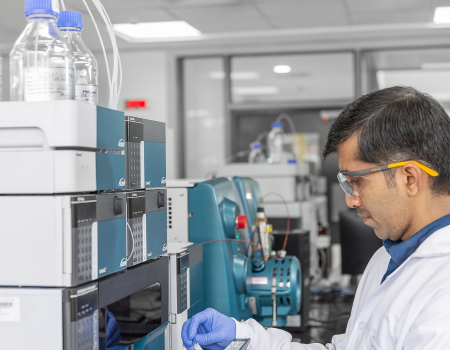
Our team has outstanding experience and capability to develop fit for purpose ADMET and In Vivo rodent and non-rodent pharmacokinetic studies to scientifically support client needs. We have expertise in developing quantitative LC-MS/MS method for complex biomarkers in bio-fluids and tissue samples.
Stability
Pre-formulation
Metabolism
Permeability/Absorbtion:
Distribution/Binding
Cytotoxicity